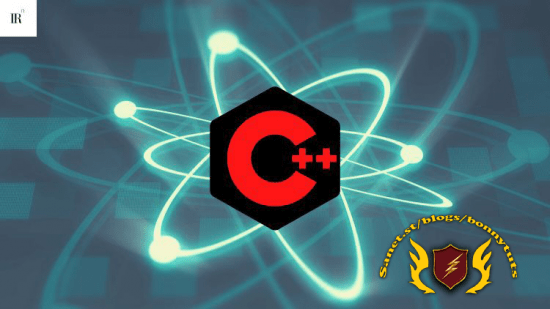
Published 3/2023
Created by RougeNeuron Academy
MP4 | Video: h264, 1280×720 | Audio: AAC, 44.1 KHz, 2 Ch
Genre: eLearning | Language: English | Duration: 63 Lectures ( 3h 5m ) | Size: 1 GB
C++ Memory model, concurreny, multithreading, performance, modern C++, C++11/14/17/20, gdb, valgrind, C++ atomics
What you’ll learn
Details of C++ memory model on which atomics are built
Concepts of memory barriers and memory order in C++
Using Modern C++ to design lock free algorithms with C++ atomics and memory model
Importance of sequential consistency in concurrency
Getting high performane using C++ memory model
External factors influencing performance of atomics
Tools to use in production while working with C++ in production
Requirements
Should have basic experience with C++ syntax
Should be able to follow up on details independently
The course provides guidelines and detailed concepts, patience needed to grasp the design ideas.
Description
This intermediate-level course is for C++ developers who want to deepen their understanding of memory models in C++.Memory models are critical to modern software development, especially for concurrent programming. In this course, you will learn about the C++ memory model, including the Sequential Consistency-Data Race Free (SC-DRF) guarantee, which ensures that concurrent programs are well-defined and behave as expected.You will also learn about the different memory barriers used to enforce ordering constraints between memory accesses in a concurrent program. Finally, you will explore the impact of these barriers on performance and learn how to use them to optimize your code.In addition, you will delve into false sharing in caches, which can lead to significant performance degradation in multi-threaded programs. You will learn how to identify and avoid false sharing in your code.The course will also cover the performance of atomics in C++ and how to use them to implement efficient synchronization mechanisms in your programs. You will explore the different types of atomics available in C++, including lock-free and wait-free algorithms, and learn how to use them effectively.Finally, the course will provide an overview of performance analysis tools such as perf, Valgrind, Intel Vtune, Google Orbit, and gdb, which can be used to profile, debug, and optimize your code.Throughout the course, you will work on practical examples and hands-on exercises to reinforce your understanding of the material. By the end of this course, you will have a solid experience with memory models in C++ and be able to write correct, efficient, high-performance concurrent programs.Importance of memory models in Modern C++Learning memory models in modern C++ is crucial for developing high-performance applications and avoiding tricky bugs resulting from the misuse of concurrent programming constructs.Memory models define the rules for accessing shared memory in a multi-threaded program. As multi-core processors become more prevalent, writing concurrent programs that correctly and efficiently utilize shared memory is essential for achieving high performance.Misuse of memory models can lead to subtle and hard-to-find bugs that can be difficult to diagnose and fix. These bugs can result in incorrect behavior, data corruption, and crashes. Therefore, understanding memory models and the various synchronization primitives provided by modern C++ is essential for developing reliable concurrent programs.By learning memory models in modern C++, developers can write efficient and correct multi-threaded programs that fully utilize the available hardware resources. They can also avoid common pitfalls and tricky bugs arising from the incorrect use of memory models.In short, learning memory models in modern C++ is a critical skill for developers who want to develop high-performance applications that utilize multiple cores and avoid the common pitfalls and tricky bugs associated with concurrent programming.Evolution of the C++ Memory ModelThe C++ concurrency model has evolved significantly from C++11 to C++20, introducing new language features and library components that provide more powerful and flexible support for concurrent programming. Here are some of the significant changes that have occurred:C++11: C++11 introduced the first set of language-level concurrency features, including the std::thread class for creating and managing threads, mutexes and condition variables for synchronization, and atomic types for lock-free programming. C++11 also defined the Sequential Consistency-Data Race Free (SC-DRF) memory model, which guarantees correct behavior for well-synchronized programs.C++14: C++14 introduced several improvements to the concurrency features introduced in C++11, including new constructors and member functions for std::thread, support for heterogeneous lookup in concurrent containers, and enhancements to the std::atomic template.C++17: C++17 introduced several new concurrency features and enhancements, including support for parallel algorithms in the Standard Template Library (STL), structured bindings for returning multiple values from std::thread functions, and support for shared_mutex for shared read access and exclusive write access. C++17 also introduced a new memory model that provides stronger guarantees for atomic operations.C++20: C++20 builds on the concurrency features introduced in previous language versions and adds several new features and enhancements. These include the atomic_ref class, which provides a safer way to access shared variables without the need for explicit synchronization, improvements to the memory model to reduce the need for explicit fences and barriers, and enhancements to the coroutines library that make it easier to write asynchronous code.The evolution of the C++ concurrency model from C++11 to C++20 has provided developers with a more powerful and flexible set of tools for writing efficient and correct concurrent programs. The new language features and library components introduced in each version have addressed many of the challenges and limitations of earlier versions. In addition, they have made concurrent programming in C++ more accessible and easier to use.
Who this course is for
Intermediate C++ developers
C++ developers curious to understand the details of C++ memory model
C++ developers exploring options to write high performance concurrent applications in C++
Password/解压密码www.tbtos.com
转载请注明:0daytown » C++ Concurrency : C++ Atomics and memory model Deep Dive